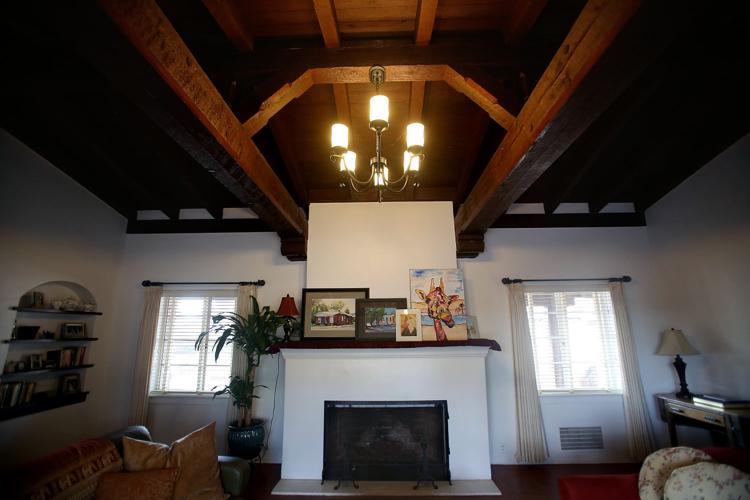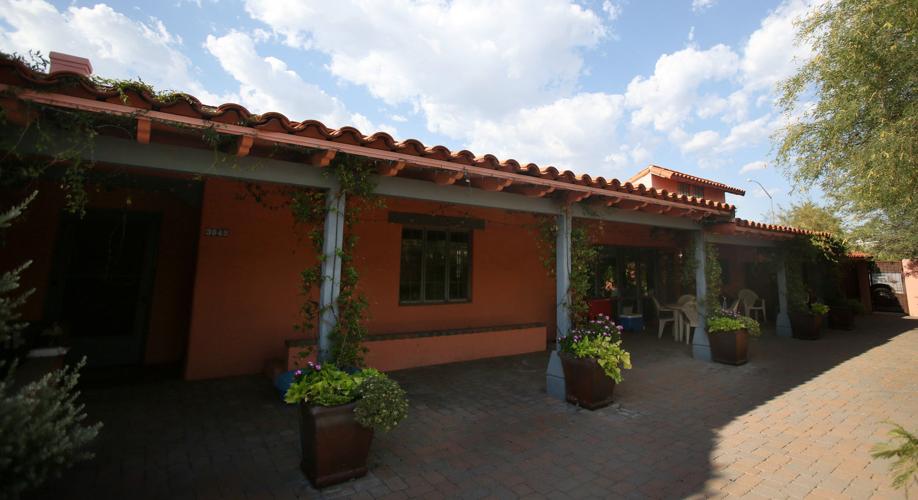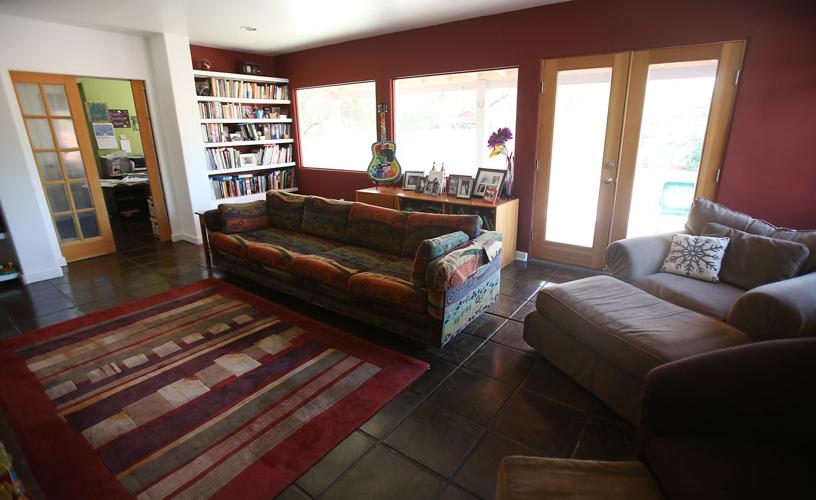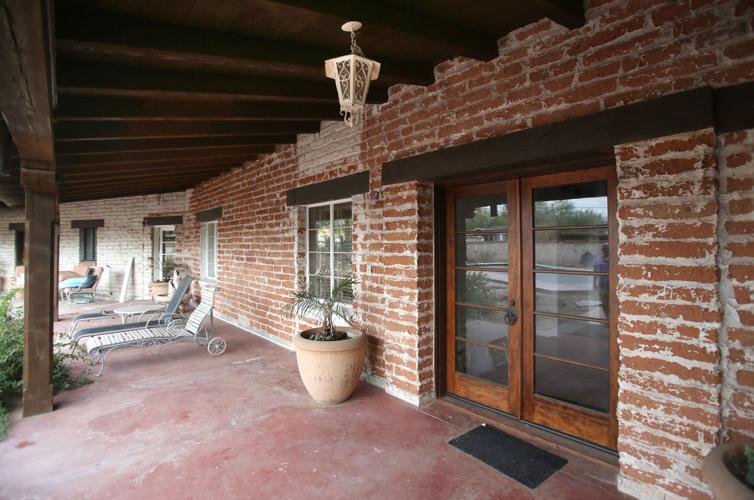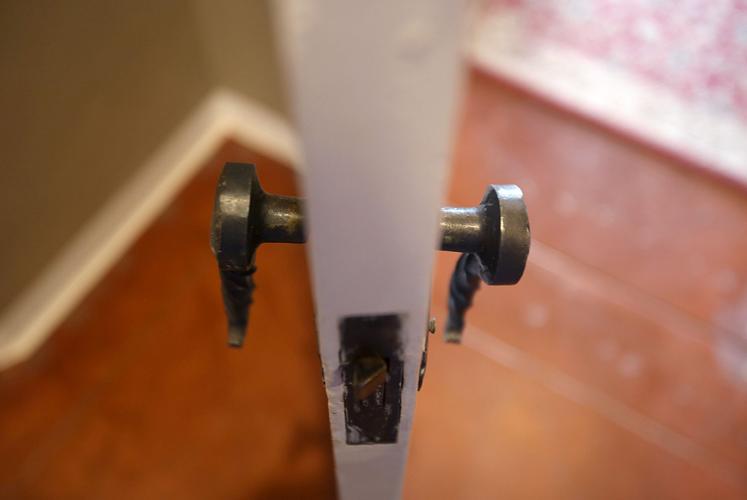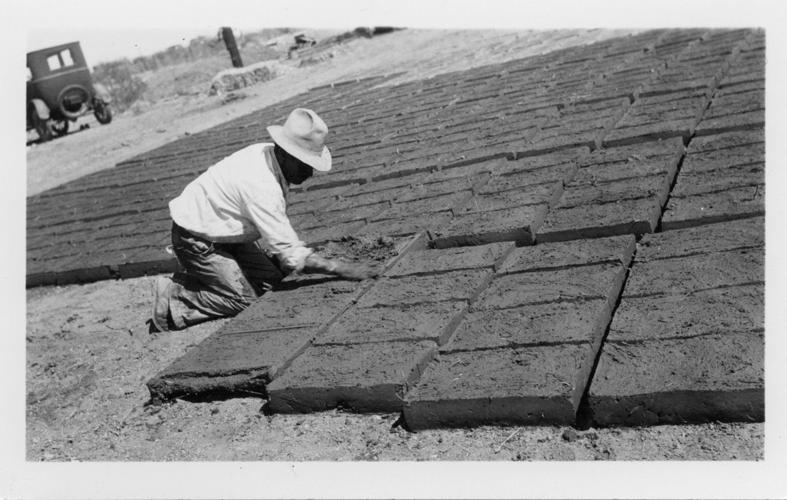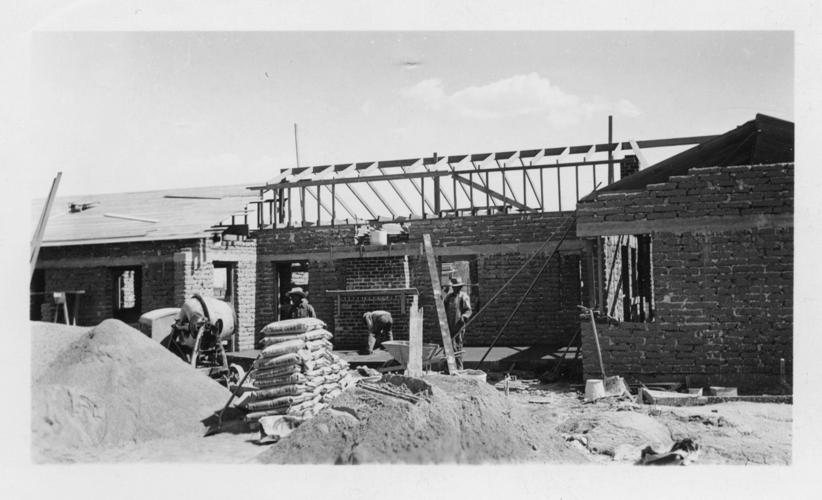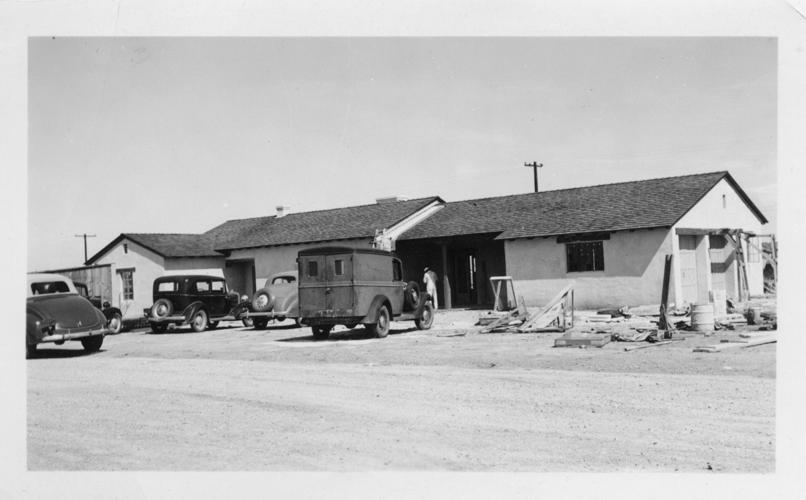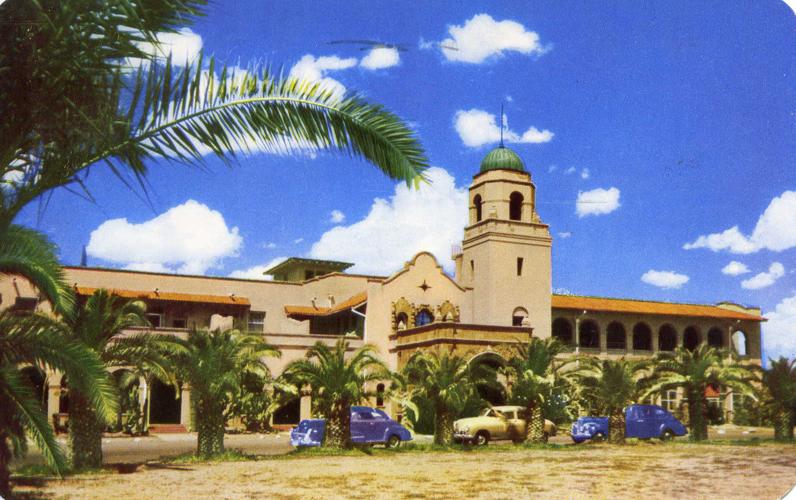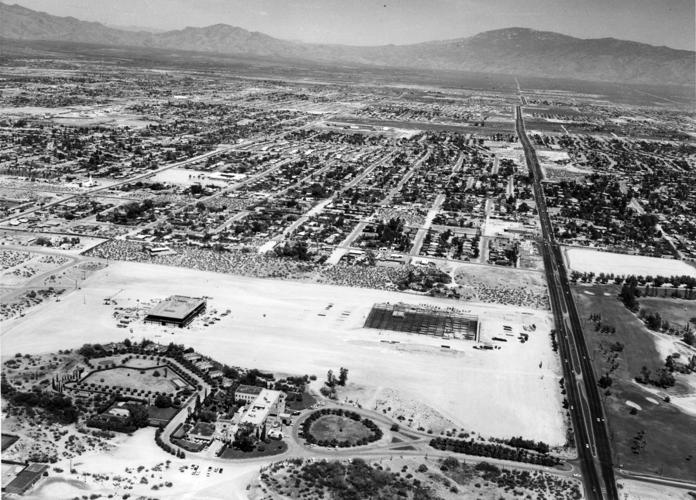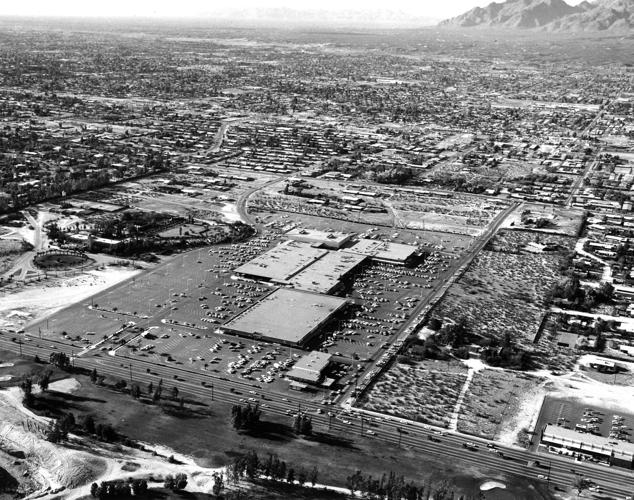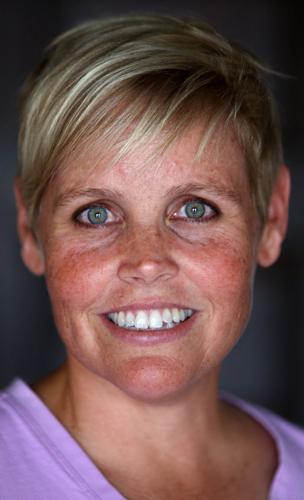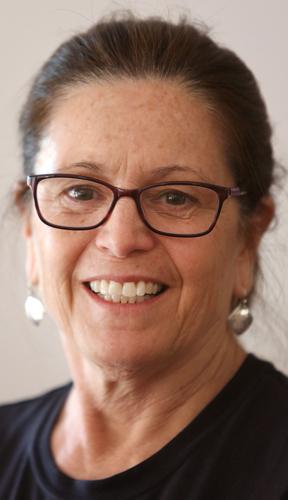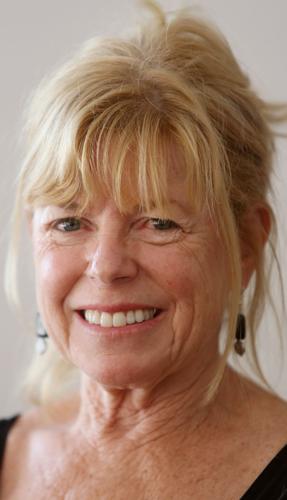When Shelley DeVere looks out the north-facing window of her midtown home, she says she can get a peek of the Catalina Mountains in the distance.
But it draws a chuckle when she hears that her historic neighborhood, El Montevideo, was sold in the 1930s as a property that offered homeowners unobstructed views of all the mountains surrounding Tucson because it was at a higher elevation than downtown – a full 105 feet higher.
A description of the neighborhood in the National Register of Historic Places quotes a 1936 advertisement in Tucson magazine that said, “The elevation of 2,550 feet commands a view of the complete circle of mountains and every important landmark within 50 miles of Tucson.”
“From here, I can see the tips of the mountains,” DeVere says now, “but there are some streets with some really good views of the mountains.”
So there’s that for the neighborhood that sits near what is considered the geographic center of Tucson. El Montevideo is one of 20 neighborhoods in the city with the official designation as a historic neighborhood. It is smaller than most neighborhoods registered with the city of Tucson, only two blocks wide and about a half-mile long. It is bordered by Broadway on the South, Fifth Street on the north, Dodge Boulevard on the west and Alvernon Way on the east.
It’s a cozy, and some say “tight-knit” neighborhood that is attractive for its convenience to everything and for its welcoming demeanor.
“I know someone on every street,” said Maggie Cozzetti, who moved into the neighborhood with her family in 1999. Cozzetti and her husband, Dennis, are well-known in the area for the family contracting business, Cozzetti Construction, that has built about 100 cabins on Mount Lemmon.
The Cozzettis live on a triple-lot in the middle of El Montevideo, a mud adobe home built in 1938 that has been expanded over time from its original 1,990 square feet to about 3,100 as porches were brought under the roof to add to the living space. The Cozzettis are only the fourth owners of the home.
“Dennis liked the house because he likes these old houses,” Maggie said. “He liked the architecture of it, the age of it.”
The neighborhood began to be developed in the early 1930s to take advantage of the visibility the area was getting after the famed El Conquistador Hotel opened in 1928 just west of El Montevideo. Lots sold for as little at $295.
One disturbing selling point of El Montevideo in its advertising – at least in modern terms – was the assurance that “protection is certain” through the deed restrictions that were recorded in 1930. According to the National Register, the “protection” referred to a deed restriction that prevented the sale, rental or leasing of any property in the subdivision to any person “not of the Caucasian race, except such persons as are employed thereon as domestic servants by the owners or tenants of any lot.”
To further attract buyers, advertisements said the property was “a few hundred feet from the El Conquistador Hotel.” The developers purposely designed the neighborhood so that some of the streets would feed directly into the desert between the hotel and the neighborhood where bridle paths formed for horseback riders from the hotel. Early owners in El Montevideo often used the hotel stables for their own horses and bought summer passes to use the hotel pool.
But that was all over by 1968 when the hotel, troubled financially for a good part of its existence, was demolished to make more room for El Con Mall, Tucson’s first mall, which had been built between the neighborhood and the hotel, and which opened in 1960.
Over the years, development at the mall led to some historic battles with the surrounding neighborhoods, in particular the 1999 fight over so-called “big-box” stores that wanted to move in. One of the biggest battles was waged when Walmart wanted to launch one of its “superstores” that would include groceries as well as the usual non-grocery fare. That led to an ordinance, since watered down, that essentially kept Walmart from moving in until 2013. In the interim, Home Depot and Target opened on the east side of the mall, closer to El Montevideo.
The Cozzettis moved in at the height of the fight over the big boxes, but at least for them, it wasn’t as much of a concern as it was to the mall’s other neighbors, El Conquistador neighborhood to the north, El Encanto to the west, and Colonia Solana to the south.
“Those guys were militant over there,” Maggie said.
“I didn’t care one way or the other,” Dennis said.
While the demise of El Conquistador Hotel and later the battle over big boxes in some eyes taint the history of El Con Mall, Kathy Martinez was ecstatic when it was built. Martinez, who was Kathy Lent when her family moved into El Montevideo in 1961, had a place to hang out with friends and spend a lot of free time.
“It was idyllic to grow up there at the age I was,” Martinez said. “The golf course (across Broadway) was not fenced in. So our recreation was going over to the mall and hanging out like all teenagers liked to do, or at night, even through college, we were running around through the park.”
The San Clemente Market which was owned by a Chinese family at the northwest corner of Alvernon and Broadway was a point of attraction for Martinez and her friends because her family had credit with the owners, which to teenagers was like free money.
“We thought they were rich because we could just go down there and get a case of soda pop or whatever we wanted,” said Bill Martinez, Kathy’s husband. The couple met while in high school, Bill at Tucson High and Kathy at Salpointe Catholic.
“We’d run down to the grocery store with our friends and charge up all the groceries we wanted to eat and come right back home,” Kathy said. “We were THE house.”
The houses in the neighborhood are a wide range of architecture and size due to early owners buying up lots in different quantities. Noted Tucson architects Josias Joesler, Lew Place and Arthur T. Brown built homes there.
DeVere and her husband have a three-bedroom, four-bath Joesler sitting on three lots with significant alterations by the previous owners that the current owners are trying to undo to get it back to its original form.
The adobe home has Joesler’s signature beamed ceilings and linear design. It was built with maid quarters on one end of the house near the kitchen with the other bedrooms on the opposite end.
The Cozzetti and DeVere/Zacher homes both sit on three lots, but across the street from both the same amount of space is broken up into three lots each with a separate, smaller home.
Both homes have scored concrete floors, which were popular at the time, but the Cozzettis were surprised to find them when they moved in because the floors were covered with carpet. When Dennis lifted the carpet to expose the floor, he found that the scores in the concrete were filled with a floor patch so the indentations in the concrete wouldn’t show through the carpet.
It was an arduous task to remove the patch and return the floors to the original look that resembles ceramic tile.
The Cozzettis also removed a wall that separated a long kitchen from a long dining room to make one large room.
“It’s not like we restored it,” Maggie said of the work that’s been done at her house since they moved in. But they’ve found little treasures like the scored concrete and some niches in a living room wall that were hidden by paneling that has since been removed. There also is a 10-by-10 foot basement that Dennis has converted to an office and which cooled naturally on an otherwise blistering hot day last week.
But with all the home’s features, the neighborhood’s history, the prominent architects and builders that built up El Montevideo, and the location, it was a simple gut feeling that made the Cozzettis settle into their home.
“It’s more about a feeling you get when you walk into a house. You can tell if it just feels right,” Dennis said. “With me, I like a house right away or I don’t. And I liked this right away.”


